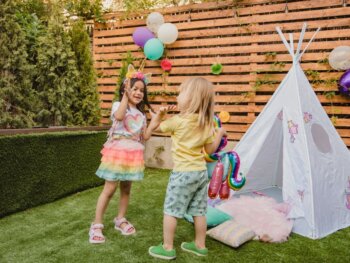
10. Actioning Abundance: Mindful Ways To Bring Mental, Emotional & Spiritual Abundance Into Your Life
Lifestyle Dec 23, 2019
Actioning Abundance is a hot topic these days, linked to happiness and trending with topics like “growth mindset” but what exactly does it mean on a mental, emotional and spiritual level? Read on for advice on how to attract and action abundance into your life.
What Does Abundance Mean?
By dictionary definition, abundance is when there’s an ample, generous, plentiful amount of something. For example, Mumbai, there’s an abundance of great restaurants or Bollywood releases an abundance of Hindi films.
For the purpose of our piece we will examine abundance from the perspective of it being a mentality, an idea originally coined by Stephen Covey in 1989 in his best selling (and still popular) book, The Seven Habits of Highly Effective People. According to Covey, an abundant mindset involves a person believing an approaching life with an understanding that there are enough resources and plentiful successes to share with others.
The opposite is the scarcity mindset which is a more negative approach that fosters unnecessary or unhealthy competition. It’s based on the idea that there’s not enough to go around and possibilities are limited (abundance mindset believes possibilities are limitless). For example, A person with an abundant mentality that loses a sports competition will accept the loss by focusing on what they learned (still won) from the situation.

Why Should We Shift To An Abundance Mindset?
Aren’t you tired and frustrated of being in social interactions that involve people bragging or boasting on their successes to ‘one-up’ each other? Not only does an abundance mindset ease the tendency to be unnecessarily competitive (so often found in South Asian culture) but it’s also believed to have a variety of benefits including a higher satisfaction with life, a higher resiliency to stress, a tendency to live more creatively (less fearfully) and healthier relationships (these are just some of the benefits).
How Do We Shift To An Abundance Mindset?
To attract abundance, you must take conscious actions to shift your mentality (or if you’re already navigating life with an abundant mentality, you can continue to take actions to strengthen it).
For example, if you’re caught in conversation at a dinner party in which adults are comparing their children’s accomplishment in academic degrees or who had the most lavish wedding, don’t engage in the conversation or better yet, make a kind comment such as “it’s great that everyone found a life partner to love and celebrated it however they wanted.”

Action is often easier said then done so to help you move from talking the abundant talk to walking the walk, we share some more tips on shifting to an abundant mindset below:
Acknowledge what you already have: Before you go for more of what you want, stop and ask yourself, are you aware and attentive to what you already have? Are you saving up for a new sweater when you have more than one in your closet you haven’t worn for months? It’s fine to want an abundance of clothes in your closet (we aren’t here to judge) but it’s a good idea to check-in with yourself by asking:
- What purpose will this serve in my life?
- What emotions will this getting this generate? (Be alert on any feelings that may be linked to self-worth and/or competing with others. For example, wanting the sweater because you feel self-conscious around your friends and want to show you can keep up with their trends is a flag you’re trying to fill a void).
Bonus action: In addition to asking yourself the right questions, a good idea is to do a home inventory every three months; we have so much that we often forget about it. Make a list of everything in your closet and/or other areas of your home to help connect with the abundance that may already be present in your life and will help with the next action.
Practice gratitude: After you’ve acknowledged and paid attention to what you have, a good idea is to give thanks for it. Practicing gratitude helps us deepen our connection to everything we already have and through the cultivation of positive emotions, we begin to shift our mindset to be more positive which then makes positive experiences easier to notice (to help put this in context, think of how you smile when trying to get a baby to smile, your joy, brings joy to the baby which in turn brings joy to you).
Pay attention to your self-talk: Stop being so hard on yourself! Instead of focusing on what you may be doing wrong, focus on what you’re doing right. For example, if you’re trying to lose weight to improve your health, don’t beat yourself if you end up indulging in a piece of cake, instead focus on all the healthy food you did eat. Remind yourself daily of your special, unique qualities and your worth.

Visualize what you want: It’s perfectly fine to be aware and thankful for all that you have and still want more. Sit comfortably in meditation and picture yourself in a state of goal accomplishment. For example, if you want to attract an abundance of career success and wealth as a writer, envision your name on the best-selling book list. Picture yourself getting the call you’ve made the list, physically see yourself smiling and emotionally channel the positive emotions of joy that you’ll feel in that moment.
Visualise yourself taking the actions that lead to what you want: Visualization during meditation is a key stepping stone but remember things will not just be handed to you. Take your visualizations to deeper level by also seeing yourself taking the actions to get your goal. Going back to the best-selling author goal, add on visualizing yourself sitting and writing everyday, physically see yourself typing and emotionally channel the positive emotions you feel when you write. Abundance is not about being passive; you must make conscious, aware steps towards your goal (schedule 10 minutes of writing a day because the reality is, the book won’t write itself).
Main image photo credit here.
Rachna Sethi
Author
Rachna (@thesassyspiritual) is a graduate of the Applied Mindfulness Meditation program from the University of Toronto, a certified Educator with two bachelor degrees and a diploma in Art Therapy. She's dedicated to living with a compassionate approach. Committed to helping people integrate Mindfuln...













































































































